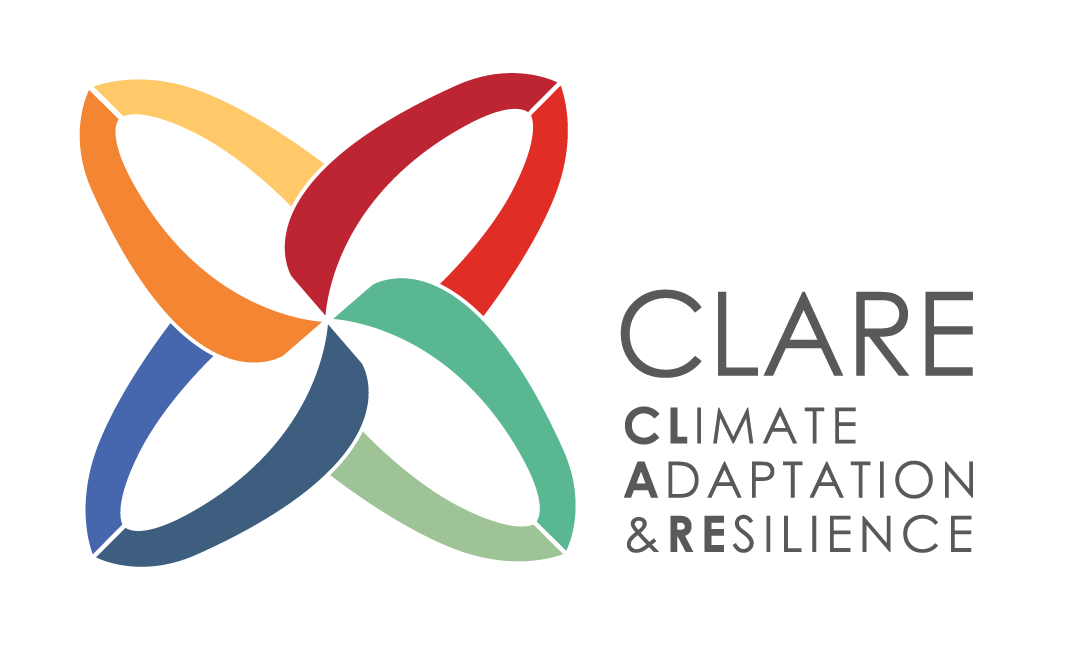
Islands at the Brink: Climate Realities in Small Island Developing States (SIDS)
/
Authored by Mashrur Hafiz and Simron Singh
This blog highlights key insights from the state-of-art reviews (full reports forthcoming) on the availability, circulation, and integrity of critical resources (e.g., food, water, energy, waste, and infrastructure) and associated climate impacts in the Maldives, Fiji, and Mauritius. The three country reviews are conducted as part of the RECOVER project. RECOVER is a needs-driven initiative and a partnership between the Maldives National University, University of Mauritius, and University of Fiji, led by the University of Waterloo, Canada. Funded by Climate Adaptation and Resilience initiative (CLARE), the project is aimed at addressing climate change adaptation through a multi-risk and multi-sector approach in the Maldives, Fiji, and Mauritius.
Small Island Developing States (SIDS) are on the frontlines of climate change and consistently rank high on a range of risk and climate vulnerability indices. IPCC’s Sixth Assessment Report recognizes the urgency of these challenges and the need for transformational adaptation strategies for small islands. At the 1992 UN Conference on Environment and Development in Rio de Janeiro, SIDS were recognized as a distinct category that face similar economic, environmental, and developmental challenges. The 58 island states, including the 20 non-UN Members/Associate Members, are home to approximately 65 million people, and cover a total area of 690,221 km², with only 3.5% being land. Their surrounding oceans (Exclusive Economic Zones) on which they depend are on average 28 times larger than their landmass1. Constrained by their small size, remoteness, and limited economies of scale, SIDS rely heavily on trade that contributes to over 70% of their GDP2. Their imports are significant – often up to 90% of total consumption – to meet basic needs as food, energy, consumer goods, and construction materials. At the same time, SIDS produce almost three times the solid waste (2.30kg/cap/day) compared to the global average (0.73kg/cap/day)3, nearly all of which stays on the island due to poor waste management practices4. These resource use patterns exacerbate SIDS’ vulnerability to global economic downturns and climate-related events (e.g., flooding, droughts, hurricanes, sea-level rise) that have pushed 40% of SIDS into unsustainable debt levels, with public debt ratios often exceeding 60% of GDP, hindering their ability to invest in resilience and climate action.
The Maldives, Fiji, and Mauritius, despite their geographical differences, share some common vulnerabilities as SIDS, but each faces their own unique challenges as well. The Maldives, an archipelago of 1,192 islands in the Indian Ocean, is characterized by its low elevation, with 80% of its land area less than 1 meter above sea level, making it one of the most vulnerable countries to rising sea levels. The Maldives’ economy is heavily reliant on tourism, contributing 25.8% of its GDP followed by transportation and communication at 10.6%, while in comparison, fisheries and agriculture constitute only 3.5% and 1.2% respectively5. The nation is almost entirely dependent on imports for food, energy, and other essential goods. Diesel is imported at a high cost of $0.19 to $0.70 per kWh for electricity production on remote islands, and food import bills have risen to $542.79 million in 2021 from $438.79 million in 2017 6,7.

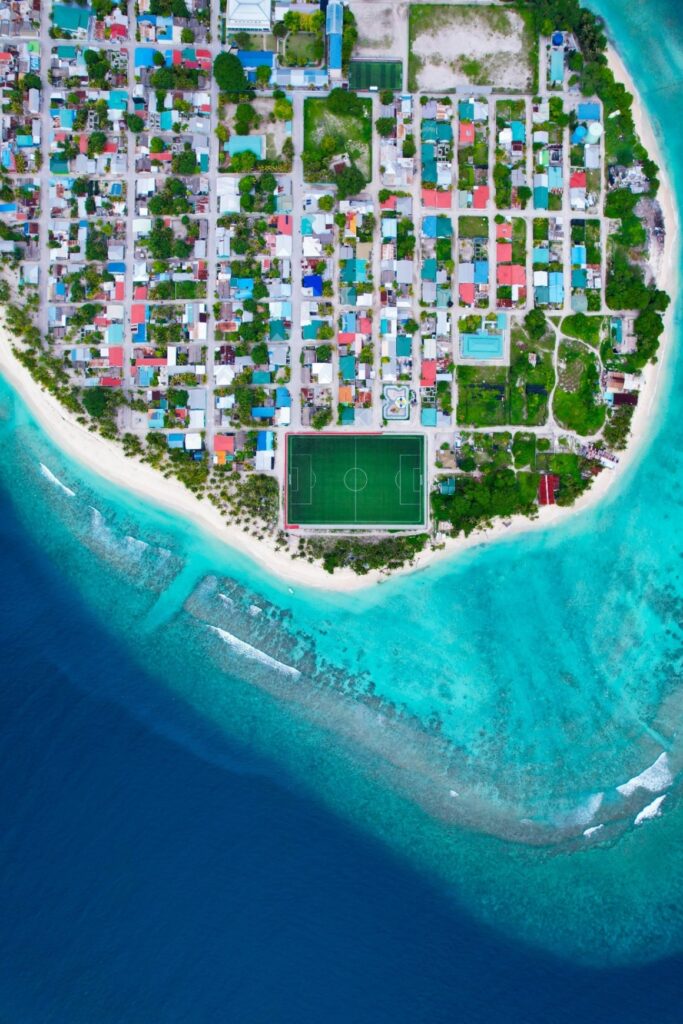
Fiji, a Pacific Island nation with a GDP of USD 5.49 billion and a population of 928,784, faces significant challenges from climate change, especially given that over 90% of its population lives in coastal areas prone to cyclones, flooding, and rising sea levels. Tropical Cyclones are the most destructive climate-related disasters in Fiji, with events like Tropical Cyclone Winston in 2016 causing catastrophic damage, destroying over 30,000 houses, affecting 62% of Fiji’s population, and causing an economic loss estimated at $903 million (F$ 1.99 billion), equivalent to about one-fifth of the country’s GDP8,9.
Mauritius, an upper-middle-income country located in the Indian Ocean with a GDP of $14.4 billion and a population of 1.2 million, faces significant challenges due to its geographic vulnerability and heavy reliance on imports, particularly the energy sector which is responsible for 78.3% of total greenhouse gas emissions and is heavily dependent on imported fossil fuels for 90% of its primary energy requirements10. The country has recorded a significant rise in temperatures, with an average increase of 0.022°C per year over the past five decades11, which, along with increased variability in weather patterns, could further strain the energy infrastructure leading to more frequent power outages and higher operational costs.
Each of these nations faces unique, yet interconnected, climate challenges that threaten their environmental stability, economic growth, and the well-being of their populations. Climate change poses a severe threat to the Maldives, exacerbating existing vulnerabilities that arise from their resource-use structure. The 2004 Indian Ocean tsunami underscored the Maldives’ vulnerabilities, causing widespread destruction and displacing over 20,000 islanders, resulting in 83 confirmed deaths, significantly damaging 39 islands, and destroying 1412. Additionally, the nation is also experiencing increased frequency and intensity of tropical cyclones, coastal erosion, and flooding, for example, the Very Severe Cyclonic Storm Ockhi in November 2017 damaged 62 islands and flooded 36, emphasizing the need for improved preparedness for future cyclones13. These climate events exacerbate existing challenges, including waste management and water scarcity.
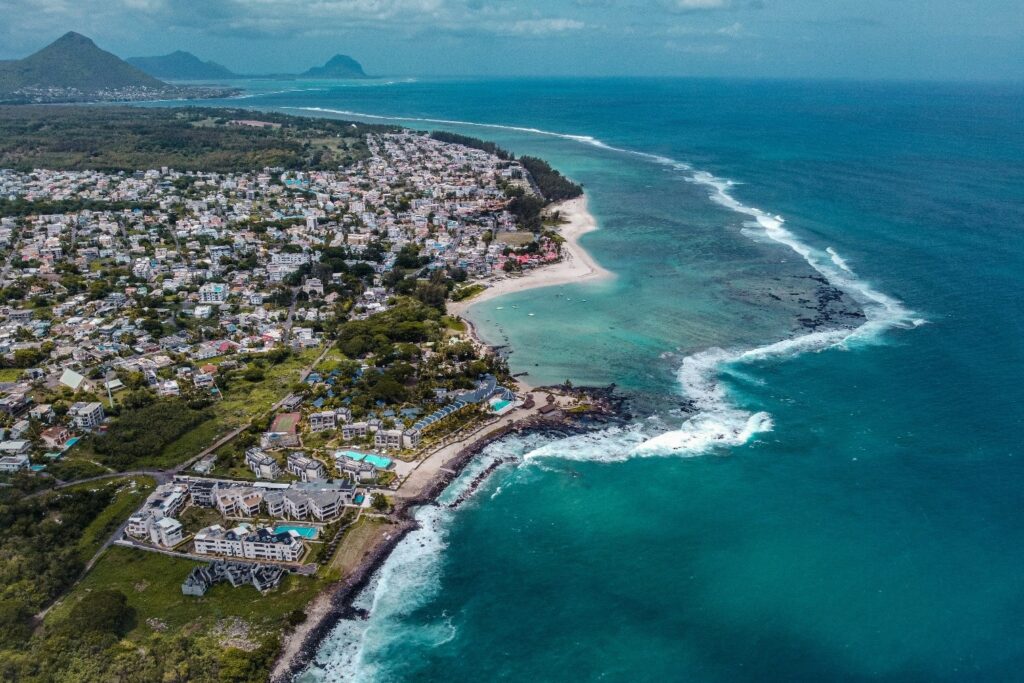
Fiji’s geographic location in the Pacific Ocean makes it highly vulnerable to climate change, particularly through the impacts of tropical cyclones, rising sea levels, and flooding. The country is already ranked as the 15th most at-risk country for disaster exposure globally, with climate change amplifying these risks14. The sea level around Fiji is projected to rise by 41–88 cm by 2100 under high-emissions scenarios, which threatens to inundate low-lying areas, increase coastal erosion, and cause saltwater intrusion into freshwater aquifers15. Additionally, flooding is a recurring threat, In 2012, damages from floods amounted to $27 million (F$ 60 million)16, with flood-related asset losses projected to grow by nearly 40% by 205017, with the possibility of 12.5% of the country’s population being pushed into poverty by a 1-in-100-year river flood15. The country has made strides in renewable energy—particularly hydropower, which generates 55-65% of its electricity—this reliance also introduces risks related to climate variability, such as droughts. Droughts can significantly reduce hydropower generation, leading to increased reliance on diesel generators, which are not only costly but also contribute to greenhouse gas emissions18. Sea-level rise is expected to have particularly severe consequences for coastal infrastructure, with projections indicating that up to 6.2% of existing buildings in Fiji will be inundated by 210019. The economic losses associated with this inundation are immense, with material loss expected to grow to over 1.1 million metric tons by 210019.
Mauritius is increasingly experiencing the adverse effects of climate change, which threaten the island’s environmental stability, economic growth, and overall quality of life for its residents. For instance, Cyclone Hollanda in 1994 devastated 50% of the island’s sugar plantations, resulting in over $238 million in damages in today’s value20. Water resources in Mauritius are severely impacted by climate change, with predictions indicating a 15% reduction in water availability by 2050 due to increased evaporation rates and prolonged droughts21. Sea-level rise presents another critical challenge, with Mauritius observing an annual increase of 4-6mm in sea levels over the past 30 years22. If current trends persist, 23% of Mauritius’s beaches could be severely eroded by 205023. The agricultural sector, which occupies 43.3% of the land surface and employs 7.2% of the labor force, is witnessing declining yields due to climate variability. For instance, sugarcane production dropped by 15.5% from 2021 to 2022, exacerbating food insecurity10,23. Climate change also poses a significant threat to infrastructure in Mauritius, with tropical cyclones and extreme weather events causing annual economic losses of approximately $160 million to $245 million, reducing GDP growth by 1.3 to 2.5 percentage points in affected years24.
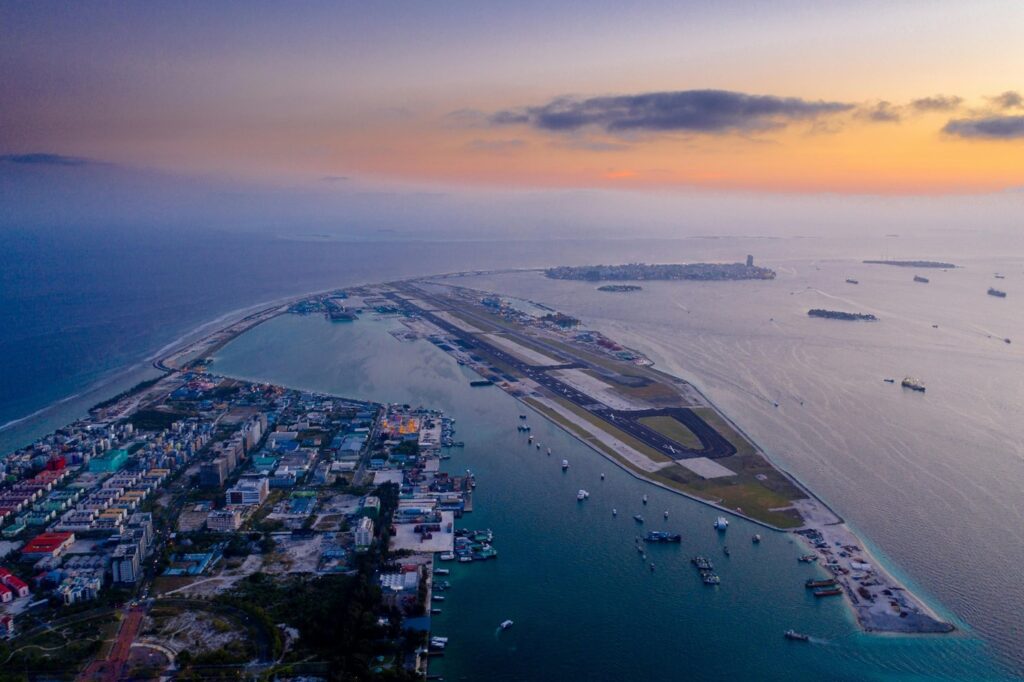
In response to the escalating climate threats, the Maldives, Fiji, and Mauritius have each implemented comprehensive adaptation policies and frameworks aimed at enhancing resilience and protecting their populations and economies. The Maldives has focused on implementing hard engineering solutions, such as seawalls and breakwaters, to protect against coastal erosion and flooding, with 45 islands adopting these methods between 2004 and 2016, while only two opted for nature-based solutions25,26. On the other hand, Fiji and Mauritius have opted for more policy-related adaptations. Fiji’s Climate Change Act 202127 mandates the integration of climate change considerations into national and subnational planning processes, while its National Climate Change Policy 2018–203028 outlines a strategic approach to mitigating and adapting to climate change across multiple sectors. Mauritius has implemented the National Climate Change Adaptation Policy Framework (NCCAPF)29 and the Climate Change Act of 202030, which focus on promoting sustainable development, protecting critical infrastructure, and reducing disaster risks. These policies represent the nations’ commitment to addressing climate change, but challenges remain, particularly in securing the necessary financial resources to support long-term adaptation.
Beyond the frameworks and policies mentioned above, each country has undertaken specific adaptation measures tailored to its unique challenges. In the Maldives, land reclamation projects such as the construction of Hulhumalé have been initiated to create additional land for housing and infrastructure, with over 1,300 hectares of new land reclaimed across around 100 inhabited islands26, however, these projects have also led to environmental concerns, including the degradation of marine ecosystems and increased dependency on external resources for maintenance and upgrades due to “lock-in-effects” with continuous dependency on external technologies, financial resources (often at high-interest loans), and raw materials for upgrade and maintenance of these structures25. Fiji has focused on the relocation of communities that are highly vulnerable to sea-level rise and coastal erosion, with the government initiating the relocation of several villages identified as being at extreme risk, with communities already resettled to safer inland locations31. The Fiji government is also investing in climate-resilient infrastructure projects, including the development of roads, bridges, and other critical infrastructure designed to withstand extreme weather events32. The country has been proactive in seeking international climate finance, including through partnerships with multilateral organizations such as the Green Climate Fund (GCF), but the estimated costs of adaptation still far exceed available resources. To meet its ambitious climate goals, Fiji requires sustained international support and innovative financing mechanisms, including climate bonds33 and private sector investments, to close the adaptation funding gap. In Mauritius, the government has invested in ecosystem-based adaptation measures, including the restoration of mangroves and coral reefs, which provide natural barriers against storm surges and coastal erosion20. Despite progress, challenges persist, including the need for more targeted international support and the scaling up of successful adaptation measures. The country requires an estimated $6.5 billion to meet its nationally determined contributions (NDCs) by 2030, with 65% of this amount needing to come from external sources34.
RECOVER will examine on-going adaptation efforts in the three SIDS, and propose systemic solutions to enhance small islands’ capacity to adapt to climate change through more inclusive and research-informed decision environments. The key approach is centred on mitigating systemic risk related to critical resource availability and circulation, self-reliance and equities in cost and benefit distributions.
“Project RECOVER is expected to significantly contribute to the enduring water security of Male’ City, the densely populated capital island of the Maldives, where more than 40 per cent of the population resides,” says Dr. Shazla Mohamed, lead researcher at The Maldives National University. “Through detailed insights into ground water resources and co-development of adaptation solutions, we envision a reliable and climate-resilient water supply for the community.”
“To address the loss of livelihoods, especially for those relying on coastal biodiversity, the project aims to alleviate socioeconomic and mental health pressures,” adds Dr. Shawkat Ali, professor and lead researcher at The University of Fiji. “By enhancing community engagement and building strong partnerships, we will bolster resilience and adaptation efforts, focusing on coastal and water management.”
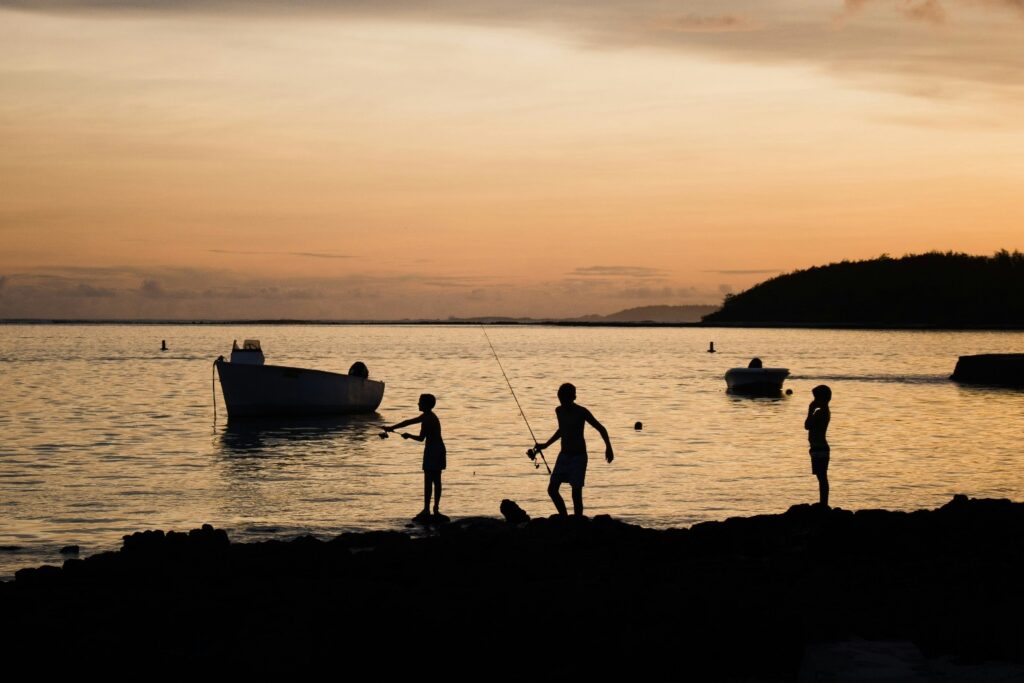
For Dr. Mahendra Gooroochurn, who leads the RECOVER team at the University of Mauritius, “the main objective of the RECOVER project is to develop a systems model for Mauritius based on a scientific approach to enable us to understand the dynamics of resource use for the island, and be able to stimulate that model to answer specific questions that will inform policies and strategies for all stakeholders involved in setting sustainability agendas be it to develop climate resilience and/or circular economy.”
Featured image credit: A house on a rocky island, Fiji by Arie Oldman
1. UN. (2024). About Small Island Developing States. United Nations Office of the High Representative for the Least Developed Countries, Landlocked Developing Countries and Small Island Developing States. https://www.un.org/ohrlls/content/about-small-island-developing-states
2. UNDESA. (2020). The COVID-19 pandemic puts Small Island Developing economies in dire straits. Policy Brief 64. United Nations Department of Economic and Social Affairs. https://www.un.org/development/desa/dpad/publication/un-desa-policy-brief-64-the-covid-19-pandemic-puts-small-island-developing-economies-in-dire-straits/
3. UNEP. (2019). SIDS Waste Management Outlook. United Nations Environment Programme. https://www.oneplanetnetwork.org/sites/default/files/from-crm/SIDS_WMO-UNEP_compressed.pdf
4. Singh, S. J., Elgie, A., Noll, D., & Eckelman, M. J. (2023). The challenge of solid waste on Small Islands: Proposing a Socio-metabolic Research (SMR) framework. Current Opinion in Environmental Sustainability, 62, 101274. https://doi.org/10.1016/j.cosust.2023.101274
5. Ministry of National Planning, Housing and Infrastructure. (2021). Annual Gross Domestic Product: Maldives. Base Year = 2014. Maldives Bureau of Statistics. https://statisticsmaldives.gov.mv/nbs/wp-content/uploads/2022/10/Annual-GDP-production-2022.pdf
6. Asian Development Bank. (2020). A Brighter Future for Maldives Powered by Renewables: Road Map for the Energy Sector 2020–2030 (0 ed.). Asian Development Bank. https://doi.org/10.22617/TCS200355-2
7. Van Driessche, P. A. (2024). Agricultural Producer Markets in the Maldives: How Poor Market Connectivity Between Farmers and the Markets can be Enhanced. International Journal of Rural Management, 20(1), 24–44. https://doi.org/10.1177/09730052231161897
8. Government of the Republic of Fiji. (2016). Fiji: Post-Disaster Needs Assessment. Tropical Cyclone Winston, February 20, 2016. Government of the Republic of Fiji. https://www.gfdrr.org/sites/default/files/publication/Post%20Disaster%20Needs%20Assessments%20CYCLONE%20WINSTON%20Fiji%202016%20(Online%20Version).pdf
9. Government of the Republic of Fiji & World Bank. (2018). Climate Vulnerability Assessment: Making Fiji Climate Resilient. World Bank. https://www.gfdrr.org/sites/default/files/publication/Making%20Fiji%20Climate%20Resilient%20-%20Full%20Report_0.pdf
10. Statistics Mauritius. (2023). Environment Statistics 2022 (1736; Economic and Social Indicators). Ministry of Finance, Economic Planning and Development. https://statsmauritius.govmu.org/Documents/Statistics/ESI/2023/EI1736/Env_Yr22_310723.pdf
11. Doorga, J. R. S. (2022). Climate change and the fate of small islands: The case of Mauritius. Environmental Science & Policy, 136, 282–290. https://doi.org/10.1016/j.envsci.2022.06.012
12. Luetz, J. (2017). Climate Change and Migration in the Maldives: Some Lessons for Policy Makers. In W. Leal Filho (Ed.), Climate Change Adaptation in Pacific Countries (pp. 35–69). Springer International Publishing. https://doi.org/10.1007/978-3-319-50094-2_3
13. World Bank, & Asian Development Bank. (2021). Climate Risk Country Profile: Maldives (Maldives). https://www.adb.org/publications/climate-risk-country-profile-maldives
14. Bündnis Entwicklung Hilft / IFHV. (2020). World Risk Report 2020. Bündnis Entwicklung Hilft. https://weltrisikobericht.de/wp-content/uploads/2020/12/WRR_2020_online_.pdf
15. Government of the Republic of Fiji & World Bank. (2018). Climate Vulnerability Assessment: Making Fiji Climate Resilient. World Bank. https://www.gfdrr.org/sites/default/files/publication/Making%20Fiji%20Climate%20Resilient%20-%20Full%20Report_0.pdf
16. Brown, P., Daigneault, A., & Gawith, D. (2017). Climate change and the economic impacts of flooding on Fiji. Climate and Development, 9(6), 493–504. https://doi.org/10.1080/17565529.2016.1174656
17. World Bank. (2021). Climate Risk Country Profile: Fiji. World Bank. https://climateknowledgeportal.worldbank.org/sites/default/files/country-profiles/15854-WB_Fiji%20Country%20Profile-WEB.pdf
18. Prasad, R. D., Bansal, R. C., & Raturi, A. (2017). A review of Fiji’s energy situation: Challenges and strategies as a small island developing state. Renewable and Sustainable Energy Reviews, 75, 278–292. https://doi.org/10.1016/j.rser.2016.10.070
19. Merschroth, S., Miatto, A., Weyand, S., Tanikawa, H., & Schebek, L. (2020). Lost Material Stock in Buildings due to Sea Level Rise from Global Warming: The Case of Fiji Islands. Sustainability, 12(3), 834. https://doi.org/10.3390/su12030834
20. Government of Mauritius. (2021). National Disaster Risk Reduction and Management Strategic Framework 2020-2030. Government of the Republic of Mauritius. https://ndrrmc.govmu.org/Pages/NDRRM_Strategic%20Framework.pdf
21. Boojhawon, A., & Surroop, D. (2021). Impact of climate change on vulnerability of freshwater resources: A case study of Mauritius. Environment, Development and Sustainability, 23(1), 195–223. https://doi.org/10.1007/s10668-019-00574-3
22. Beeharry, Y. D., Bekaroo, G., Bokhoree, C., & Phillips, M. R. (2022). Impacts of sea-level rise on coastal zones of Mauritius: Insights following calculation of a coastal vulnerability index. Natural Hazards, 114(1), 27–55. https://doi.org/10.1007/s11069-022-05378-9
23. Sultan, R. (2021). Economic Impacts of Climate Change on Agriculture: Insights from the Small Island Economy of Mauritius. In S. Moncada, L. Briguglio, H. Bambrick, I. Kelman, C. Iorns, & L. Nurse (Eds.), Small Island Developing States (Vol. 9, pp. 137–158). Springer International Publishing. https://doi.org/10.1007/978-3-030-82774-8_7
24. United Nations Development Programme (UNDP). (2024). Country Profile: Mauritius. UNDP: Rising Up For SIDS. https://sids.data.undp.org/country-profiles/mauritius?compare=
25. Duvat, V. K. E. (2020). Human-driven atoll island expansion in the Maldives. Anthropocene, 32, 100265. https://doi.org/10.1016/j.ancene.2020.100265
26. World Bank. (2024). Maldives Country Environmental Analysis: Towards a More Sustainable and Resilient Blue Economy. World Bank. https://doi.org/10.1596/41085
27. Government of the Republic of Fiji. (2021). Climate Change Act 2021. Government of the Republic of Mauritius. https://climate-laws.org/documents/climate-change-act-2021_eda6?id=climate-change-act-2021_8bf7
28. Government of the Republic of Fiji. (2019). Republic of Fiji National Climate Change Policy 2018 – 2030. Government of the Republic of Fiji. https://fijiclimatechangeportal.gov.fj/wp-content/uploads/2022/01/FIJI-NCCP-2018-2030_0.pdf
29. Government of Mauritius. (2012). National Climate Change Adaptation Policy Framework. https://www.greenpolicyplatform.org/sites/default/files/downloads/policy-database/MAURITIUS)%20National%20Climate%20Change%20Adaptation%20Policy%20Framework%20for%20the%20Republic%20of%20Mauritius.pdf
30. Government of Mauritius. (2020). Climate Change Act 2020 (Act No. 11 of 2020). (Legal Supplement to the Government Gazette of Mauritius No. 145 of 28 November 2020.). https://climate-laws.org/document/climate-change-act-2020-no-11-2020_539f
31. Government of the Republic of Fiji. (2019). Climate Relocation of Communities Trust Fund Act 2019 (Act No 21. of 2019). Government of the Republic of Fiji. https://climate-laws.org/documents/climate-relocation-of-communities-trust-fund-act-2019-an-act-to-establish-a-trust-fund-for-the-planned-relocation-of-communities-in-fiji-that-are-adversely-affected-by-climate-change-act-no-21-of-2019_df26?q=Fiji&sf=date&so=desc&o=0&act=BGAAABGCMIBC&cts=%5B%22BGAAABGCMIBC%22%5D&id=climate-relocation-of-communities-trust-fund-act-2019-an-act-to-establish-a-trust-fund-for-the-planned-relocation-of-communities-in-fiji-that-are-adversely-affected-by-climate-change-act-no-21-of-2019_24e5
32. Government of the Republic of Fiji. (2018). Republic of Fiji National Adaptation Plan A pathway towards climate resilience. Government of the Republic of Fiji. https://fijiclimatechangeportal.gov.fj/wp-content/uploads/2022/01/Fiji_National-Adaptation-Plan.pdf
33. Ministry of Economy & United Nations Development Programme (UNDP). (2022). Fijian Sustainable Bond Framework 2022. Government of the Republic of Fiji. https://fijiclimatechangeportal.gov.fj/wp-content/uploads/2022/11/Fijian-Sustainable-Bond-Framework.pdf
34. Munbodh, S. G., Urvashi Soobarah and Arjun. (2023, December 12). How Mauritius is mobilising climate finance. OMFIF. https://www.omfif.org/2023/12/how-mauritius-is-mobilising-climate-finance/
Categories
CLARE Themes
CLARE Topics

